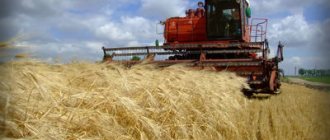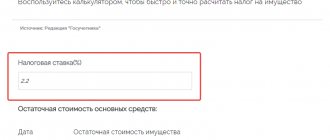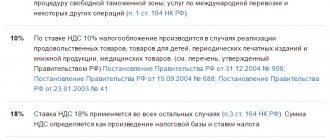One of the priority areas for the development of the Russian economy is agriculture. In this regard, a special tax regime was developed for enterprises in this area - a single agricultural tax. Unified agricultural tax - what is it in simple words?
Payers on this system are exempt from income tax (individual entrepreneurs from personal income tax), as well as partially from property tax. Instead, they pay a single tax on the difference between income and expenses. In this case, the person must have the status of an agricultural producer. These include legal entities, peasant (farm) enterprises and individual entrepreneurs who are engaged in the production, processing or sale of crops, livestock products, fisheries, and also provide services in the field of agriculture. In addition, the key condition for applying the special regime is a limit on income from other activities. The share of revenue from sales of agricultural products in total revenues must be at least 70%.
Currently, the procedure for taxing persons on the Unified Agricultural Tax has changed somewhat. What innovations have appeared in the Unified Agricultural Tax system since 2021? You can find the latest news in our article.
Unified Agricultural Tax in 2021: changes in payer obligations
From January 1, 2021, agricultural producers in a special regime have an obligation to pay value added tax to the budget. It is established by Federal Law No. 335-FZ of November 27, 2021, amending the Tax Code. Previously, taxpayers of the Unified Agricultural Tax of the Tax Code of the Russian Federation were provided with an exemption from VAT. The exception was the tax paid to the budget when importing imported products. Now companies and individual entrepreneurs on the Unified Agricultural Tax will have to draw up all the necessary documents as payers of value added tax. In particular, keep a book of purchases and sales and prepare invoices for counterparties. In addition, you will need to submit a VAT return.
Submit your Unified Agricultural Tax declaration online
Enter the details of your organization, and Kontur.Extern will help calculate agricultural tax, check the declaration for errors and instantly transfer it to the tax office, and then prepare a payment slip for the bank.
Send a request
Procedure and deadline for payment under Unified Agricultural Tax
To have an idea of what expenses are taken into account, in what volume and how their price is determined, if we are talking about physical measurement (barter), accounting should be regulated by Article 346.5 of the Tax Code of the Russian Federation. In-kind income will be assessed based on the terms of the contract under which it was received, taking into account market prices. If settlements occur in foreign currency, then they are recorded in chronological order with ruble settlements, at the exchange rate on the day of settlements in the Central Bank of the Russian Federation.
From a detailed reflection of operations, a general picture of the company’s activities is created, its actual income, which is subject to the tariff rate under the Unified Agricultural Tax.
So, if it is determined that the agricultural producer’s reporting is submitted annually, then payment of the tax consists of two parts. The first payment is an advance payment, which is determined by calculation and payment must be made before July 25, so as not to accrue penalties and sanctions for late payments. The second part is the final payment, which is calculated from the actual results of economic activity. In case of income received, this tax contribution must be paid to the budget by March 31.
Unified agricultural tax and VAT in 2021: advantages and disadvantages
What are the positive and negative aspects of the new duty of agricultural producers? Paying VAT is an additional tax burden for businesses, which is a negative factor. The volume of reports compiled automatically increases, and therefore labor costs. Also, the emergence of an obligation to pay a new tax means additional control on the part of the tax service.
On the other hand, payers of the single agricultural tax are now more attractive to counterparties. It is often unprofitable for buyers to purchase goods from those persons who do not have to pay VAT. In these cases, they lose their right to receive a deduction. It is expected that the introduction of VAT for agricultural producers will increase demand for their products.
Nuances when calculating agricultural tax
When calculating agricultural taxes, the accountant made the following mistakes:
- did not check the list of expenses allowed by the Tax Code (clause 2 of Article 346.5 of the Tax Code of the Russian Federation);
- did not take into account the requirements of paragraph 4 of Art. 346.5 of the Tax Code of the Russian Federation regarding the algorithm for writing off the cost of fixed assets.
Due to the accountant’s carelessness, the expenses included a penalty paid to the counterparty for violation of delivery conditions in the amount of 30,000 rubles. - such consumption is absent in clause 2 of Art. 346.5 of the Tax Code of the Russian Federation and could not participate in the calculation of agricultural tax.
The second serious omission was the complete write-off during the tax period of the residual value of agricultural machinery, which was included in fixed assets at the time of the transition of Polevod LLC to the special regime.
Since the useful life of the equipment exceeded 3 years (but less than 15 years), according to clause 4 of Art. 346.5 of the Tax Code of the Russian Federation, its residual value had to be written off in three parts in 2015, 2021 and 2017.
In 2015, the amount taken into account in expenses was 120,000 rubles. (50% × 240,000). In subsequent periods:
- 2016: 30% × 240,000 rub. = 72,000 rub.;
- 2017: 20% × 240,000 rub. = 48,000 rub.
Thus, in the calculation of agricultural tax, expenses in the amount of 150,000 rubles are unnecessarily taken into account:
- 30,000 rub. — “forbidden” consumption under the Unified Agricultural Tax;
- 120,000 rub. (72,000 + 48,000) - premature write-off of the residual value of fixed assets acquired before the transition to the unified agricultural tax.
Underpayment of agricultural tax at the end of 2015: RUB 9,000. (RUB 150,000 × 6/100).
Study the calculation algorithms for tax obligations under various taxation regimes using the materials on our website:
- “Calculation of the UTII tax base in 2014–2015”;
- “The procedure for calculating the simplified tax system “income minus expenses” (15 percent)”.
Exemption from VAT for agricultural producers
Firms and enterprises on the Unified Agricultural Tax have the right to receive an exemption from VAT. This is possible in the following situations:
- notification for obtaining VAT exemption and notification of the start of work in a special regime refer to one calendar year;
- or compliance with the standard for revenue from agricultural activities. The threshold value will gradually decrease. So, in order to receive VAT exemption in 2021, income excluding tax in 2021 should not have exceeded 100 million rubles. in a year. The criteria for subsequent years are shown in the table:
| Year | Revenue threshold |
| 2020 | 90 million rub. in 2021 |
| 2021 | 80 million rub. in 2021 |
| 2022 | 70 million rub. in 2021 |
| 2023 | 60 million rub. in 2022 |
If an agricultural producer plans to exercise the right not to pay VAT, he must submit a corresponding notification to the tax office. A notice of VAT exemption for the Unified Agricultural Tax is submitted up to and including the 20th day of the month from which the payer begins to exercise his right not to pay tax. The application form for exemption from VAT under the Unified Agricultural Tax in 2021 is contained in the Letter of the Federal Tax Service of Russia dated January 15, 2019 No. SD-4-3/ [email protected]
Those companies and individual entrepreneurs that sold excisable products within three calendar months before submitting the notification cannot receive VAT exemption. When the sale of excisable goods begins or when the revenue limit is violated, the agricultural producer loses the right not to pay VAT. In the future, such persons do not have the right to re-release. Please note that if obtaining an exemption is voluntary, then the reverse procedure is not possible unless the above conditions are violated.
When do you need to pay agricultural tax?
The deadlines for payment of the unified agricultural tax are determined based on the established boundaries of the tax and reporting period. The tax period in this system is considered to be a calendar year, while the reporting period is a half-year, that is, there will be two agricultural entrepreneurs in a calendar year.
According to the law, both legal entities and private entrepreneurs must pay an advance no later than 25 days after the expiration of the reporting period. In the calendar, this period is limited to July 1st to July 25th.
The fee for collecting income for the whole year is calculated and paid based on the end of the tax period, that is, next year. The deadline for paying the Unified Agricultural Tax in 2021 will be April 2.
Late filing of reports may result in penalties ranging from 5% to 30% of the amount of the unpaid fee, according to the declaration. The fine is calculated for each month from the date of delay in filing the declaration.
According to Art. 122 of the Tax Code of the Russian Federation, late paid tax entails financial sanctions in the amount of 20% to 40% of the debt amount.
Tax rates of the special regime for agricultural producers in 2021
The unified agricultural tax in 2021 is generally paid at a standard rate of 6%. At the same time, the authorities of the constituent entities of the Russian Federation can establish differentiated rates in the range from 0 to 6%. This opportunity has appeared since the beginning of 2021. The bet size depends on:
- type of agricultural products (or works/services);
- the amount of income from doing business in agriculture;
- places where the person carries out activities;
- number of employees of the company or individual entrepreneur.
Variation of rates allows you to find a balance between the burden on payers and the amount of tax revenue. Some regions have already exercised the right to introduce reduced rates on their territory. For example, in the Moscow region a zero tax rate has been established until December 31, 2021. Until the same date, rates were established by local laws in the Sverdlovsk (5%) and Kemerovo regions (3%).
How to calculate the Unified Agricultural Tax?
The calculation of the Unified Agricultural Tax, at first glance, does not cause difficulties, since it involves the use of only one simple formula: you need to subtract paid expenses from the income received and multiply by the tax rate.
However, you should not be deluded by apparent simplicity and not observe due diligence when calculating agricultural tax.
To illustrate the calculated nuances of agricultural tax, let’s look at an example of calculating the Unified Agricultural Tax and analyze the accountant’s mistakes.
Example
Polevod LLC began business as an agricultural producer in 2015, previously using OSNO. At the time of transition to the special regime, the accounting records of Polevod LLC include agricultural machinery with a residual value of 240,000 rubles. and a useful life of 5 years.
During 2015, buyers paid the company 1,540,000 rubles for grain. The company paid the following expenses:
- salary of main workers, support staff and AUP (including insurance premiums) - 420,000 rubles;
- payment for fuel and lubricants and other material expenses - 180,000 rubles;
- contributions for voluntary crop insurance against drought - 40,000 rubles;
- rental payments - 240,000 rubles;
- payment of a penalty to the counterparty for late deliveries - 30,000 rubles;
- expenses for office supplies - 25,000 rubles;
- paid cost of the quality certificate is 50,000 rubles.
In the 1st half of the year (this is the reporting period under the Unified Agricultural Tax), expenses exceeded income, so Polevod LLC did not pay the advance payment.
The accountant calculated the unified agricultural tax at the end of the year as follows:
- counted the income received into the current account and the cash register from the sale of products (D):
(D) / RUB 1,540,000;
- determined expenses (P) as follows:
P = (420,000 + 180,000 + 40,000 + 240,000 + 30,000 + 25,000 + 50,000 + 240,000) = 1,225,000 rub.
- calculated the agricultural tax (AT) based on the rate of 6% (Article 346.8 of the Tax Code of the Russian Federation) according to the formula (Article 346.9 of the Tax Code of the Russian Federation):
CH = (D – R) × 6 / 100
CH = (1,540,000 – 1,225,000) × 6 / 100 = 18,900 rubles.
At the same time, the accountant made several errors in the calculations, as a result of which the agricultural tax was underestimated. We'll talk about this in the next section.
Property tax for Unified Agricultural Tax payers - 2018
An important issue when applying the Unified Agricultural Tax is property taxation. The key changes in the Unified Agricultural Tax system in recent years include the amendment to the Tax Code regarding property tax. Starting from 2021, only property that is involved in agricultural activities is exempt from taxation. It includes assets that are involved in the production, processing, sale of agricultural goods or in the provision of services by agricultural producers. Previously there was no such clause.
Property used in agricultural activities can be divided into two groups. One is directly used for production. For example, sowing equipment, buildings where animals are kept, etc. Others are auxiliary, in particular garages for equipment, warehouses, etc. The right not to pay tax applies to both groups.
Assets subject to property tax and assets involved in agricultural activities must be accounted for separately. However, a situation may arise when an enterprise uses property simultaneously for the production of agricultural products and for other activities. In this case, the property cannot be taken into account separately. In 2018, Federal Tax Service Letter No. BS-4-21 dated July 10, 2021 was issued [email protected] It provides the following explanation: if an agricultural enterprise uses property for other business activities, but at the same time for its intended purpose, then it is not subject to tax. In addition, there is no need to pay property tax if the assets are under conservation, that is, temporarily not used in the main activity.
When a peasant farm operates on the Unified Agricultural Tax
A peasant farm is a business entity that currently most closely corresponds to the organizational and legal form of an individual entrepreneur. The fact is that the state registration of a peasant farm involves actually registering the head of the farm as an individual entrepreneur.
At the same time, the legislation of the Russian Federation fundamentally allows for the registration of peasant farms as legal entities (Article 86.1 of the Civil Code of the Russian Federation, paragraph 2 of Article 50 of the Civil Code of the Russian Federation), but at the moment there are no legal mechanisms that allow farmers to work in practice in the appropriate organizational and legal form.
The founders of peasant farms most often enjoy the right to work under the Unified Agricultural Tax, which allows them to pay 6% of the difference between the income and expenses of the farm.
Working for the Unified Agricultural Tax requires farmers to carry out the following basic actions within the framework of reporting procedures:
- provision of reporting documents to the Federal Tax Service;
- provision of reporting forms to extra-budgetary funds;
- maintaining a ledger of income and expenses.
Who pays the Unified Agricultural Tax
Russian organizations and individual entrepreneurs who are agricultural producers and have voluntarily switched to paying the Unified Agricultural Tax.
Companies and entrepreneurs granted the status of agricultural producers, but who have not expressed a desire to switch to paying a single agricultural tax, by default use other taxation systems. In other words, the transition to the unified agricultural tax cannot be forced.
Submit a notification about the transition to the unified agricultural tax and submit tax reports via the Internet Submit for free
Accounting for income and expenses under the Unified Agricultural Tax
Taxable income under the Unified Agricultural Tax system is revenue from the main type of activity (sales income), as well as amounts received from other types of activities (non-operating income).
The list of expenses is strictly limited. It includes all the most common costs, in particular, wages, the cost of fixed assets, advertising costs, etc. By the way, the cost of tests for coronavirus under certain conditions can be classified as costs (see “Costs for coronavirus testing of employees reduce the Unified Agricultural Tax "). But at the same time, the list does not include such an item as “other expenses”. Therefore, tax authorities are strict during audits and cancel any expenses that are not directly mentioned in the list.
All income and expenses must be taken into account. Organizations must fill out accounting registers, entrepreneurs must keep a special book of income and expenses, the form of which was approved by order of the Ministry of Finance of Russia dated December 11, 2006 No. 169n.
Taxpayers of the Unified Agricultural Tax apply the cash method of recognizing income and expenses. This means that income is generally recognized when money is received in the current account or cash register, and expenses are recognized when the enterprise or individual entrepreneur repays the obligation to the supplier.








